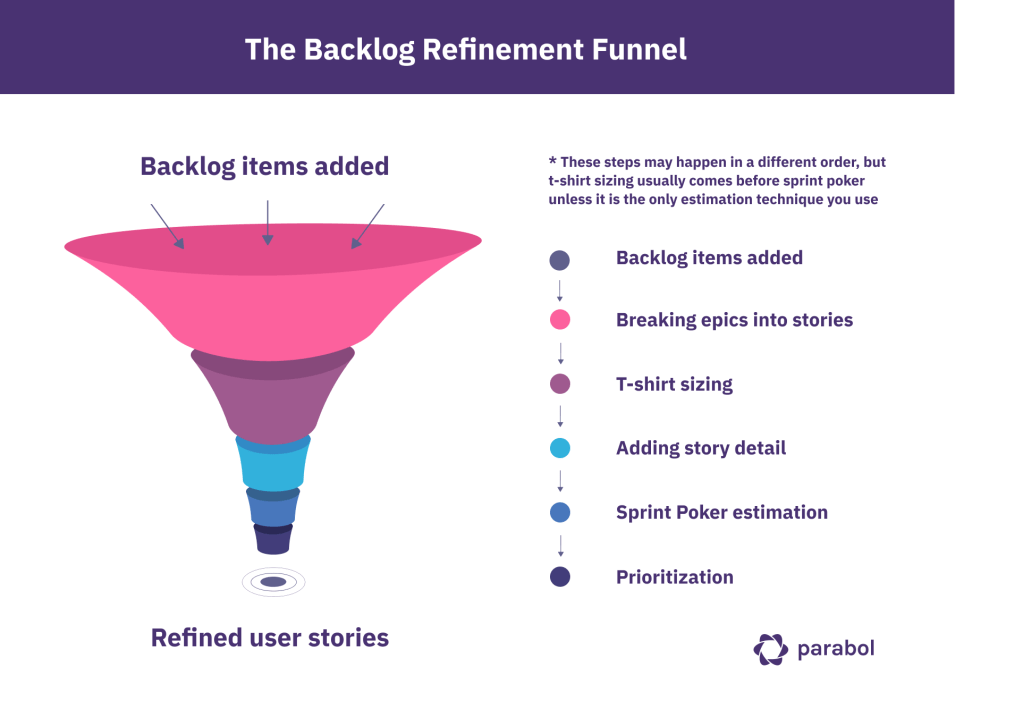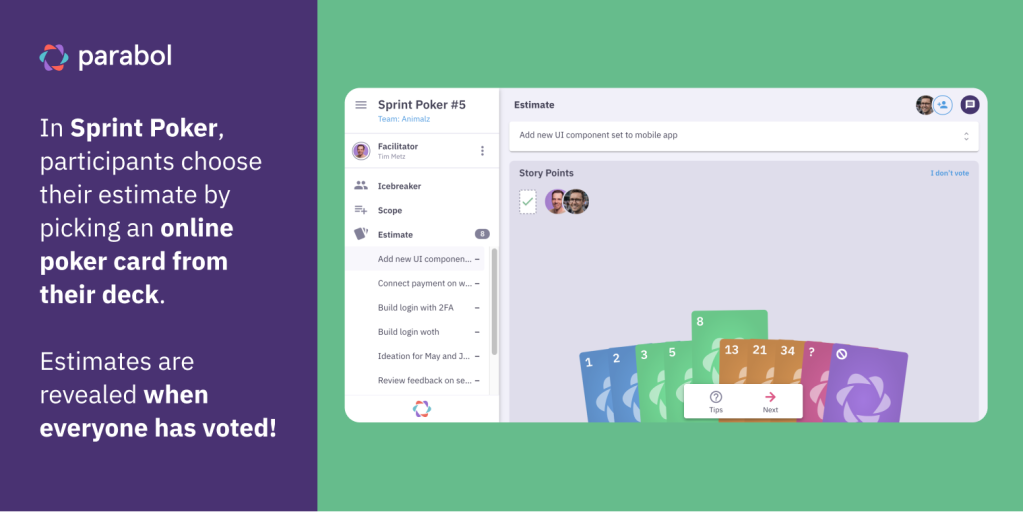Agile Meetings
9 Formats from Different Frameworks

When you think of something that symbolizes anti-agile bloated meetings might come in a good second – just after micro-managing bosses.
Meetings are a massive source of waste in many organizations. They often start late, run over, and lack a clear goal.
So here come Agile meetings to the rescue! 🦸♀️ Well, perhaps But what does that really mean? What distinguishes an agile meeting from a traditional one?
Are they just events listed in the official Scrum guide or in another Agile framework? Or are there meetings that also originate elsewhere?
In this resource, we’ve catalogued all the meetings outlined in various Agile frameworks. We’ve also included Agile meetings that exist independent of any framework.
What’s an Agile meeting?
An agile meeting is typically considered any event that’s part of an Agile framework, methodology, or theory.
That includes the events listed in the official Scrum Guide, like Sprint Planning, the Daily Scrum, and Sprint Retrospectives. But also meetings from other Agile approaches, such as Extreme Programming or Kanban.
However, there’s some debate about what, in fact, makes a meeting Agile:
- Do Agile meetings primarily serve the team?
- Are they meetings that seek to achieve the goals outlined in the Agile manifesto?
- Are they run in accordance with the principles of the Agile manifesto?
- Are they only the meetings outlined in an Agile framework, methodology, or approach?
Consensus is hard to find.
In this resource, we’ve focused on the meetings explicitly outlined in Agile approaches, and a few others that are common and popular among Agile teams.
What are the Agile and Scrum meetings?
Here’s an overview of the meetings that are part of Scrum, other popular Agile frameworks, or have emerged as meeting types Agile teams run together:
Sprint Planning
Sprint Planning is often the first meeting a team runs at the start of a Sprint cycle. In this meeting, Agile teams commit to the tasks they will complete in the upcoming Sprint by taking them from the Product Backlog and into the Sprint Backlog.
As the team selects tasks for the Sprint, they clarify what each item means and who will work on it. Sprint Planning finishes when the team feels the selected work roughly matches what they can achieve in one Sprint.
The Sprint Planning meeting happens at the start of the Sprint. It can last between one to two hours for a two-week Sprint.
📚 Origin: Sprint Planning originates from the Scrum framework and is included as one of the official Scrum events. A similar process is adopted by many other teams that organize their work according to Sprints.
Read more about this meeting:
Daily Scrum
Also known as the Daily Standup, Daily Huddle or even just a Check-In meeting, especially for teams that follow a different Agile framework than Scrum.

The Daily Scrum is one of the five official Scrum events. It’s a 15-minute meeting held every working day of the Sprint at the same time and place by the developers of the Scrum team. It is sometimes called a Daily Standup based on the idea that standing in the meeting keeps it short, although there are some debates about whether the term is ableist.
The Daily Scrum’s purpose is to keep the team focused on the Sprint Goal and reduce the need for other meetings. During the daily gathering, the team can exchange information about their work, adjust their plans, and engage in quick problem-solving to unblock each other.
For remote or distributed teams, the Daily Scrum or Daily Standup may take place asynchronously.
📚 Origin: The Daily Scrum originates in Scrum, as the name suggests. The process of getting together each day for a short “Standup” meeting is enshrined in the rules of Extreme Programming (XP) and has been adopted by many teams regardless of the Agile framework they use.
Read more about this meeting:
Sprint Review

The Sprint Review showcases the work the Scrum team got done during their Sprint. Sprint Reviews take place at the end of the Sprint, usually before the Sprint Retrospective.
During a Sprint Review, the team collects feedback on their work from stakeholders. During this meeting, the team determine if they met the Sprint Goal and discuss how to improve the product further in future Sprints.
The team should showcase working software during the Sprint Review, not props that lack functionality. Sprint Reviews allow stakeholders to give feedback early and often instead of rarely and late.
📚 Origin: The Sprint Review originates from the Scrum framework
Read more about this meeting:
Sprint Retrospective

Agile teams use Sprint Retrospectives to review their work together and identify opportunities for process improvements. Teams hold a Sprint Retrospective at the end of every Sprint.
Anything is up for review and discussion during the Sprint Retrospective, including working relationships, interactions, processes, and tools.
All team members first suggest topics for discussion, usually by writing their thoughts down on reflection cards. They then group these into common themes, and the whole team votes on which ones they want to discuss.
The goal of a Sprint Retrospective is to help the team continuously improve how they work together, Sprint after Sprint.
Many remote and distributed teams use an online retrospective tool for this meeting. Teams working in an office environment may use a physical whiteboard with thoughts written on sticky notes.
📚 Origin: The concept of Sprint Retrospectives originates from Scrum and is borrowed from the long-standing concept of Post-Mortem or Lessons Learned meetings.
Read more about this meeting:
Backlog Refinement
Backlog Refinement (formerly known as Backlog Grooming) is a process by which teams add detail to items in their Product Backlog so that each item includes all the necessary information required for work to begin.

Product Backlog items that have been refined are generally considered ready to be taken into the Sprint Backlog during Sprint Planning.
Some agile practitioners don’t consider backlog refinement a meeting because the Scrum Guide refers to it as “an ongoing process” that involves breaking items down, prioriziting and adding details to Product Backlog items. Other teams do make backlog refinement a recurring, formal meeting to ensure that refinement happens often and not at the last minute before Sprint Planning.
📚 Origin: Backlog Refinement originates in Scrum, but any team that has a Product Backlog needs to do some form of refinement to ensure their ideas are organized and prioritized. The term Backlog Refinement was adopted in 2013 and was formerly Backlog Grooming.
Read more about this meeting:
Planning Poker

Planning Poker or Sprint Poker is an agile task and project estimation method. Teams come together to review a selection of user stories or tasks from the Product Backlog. Each participant individually estimates how much effort a work item will involve by playing cards with different values from a customized deck.
Every participant chooses their card anonymously before they reveal their picks simultaneously. This practice ensures people don’t influence each other’s estimates. A discussion of everyone’s estimates follows after everyone has revealed their cards, so teams can agree on the effort required to complete pieces of work.
Many remote and distributed teams use an online poker estimation tool for this meeting. Teams working in an office environment may use a physical deck of cards to play together.
📚 Origin: Planning poker was originally conceived in 2002 by James Grenning. It gained popularity after being mentioned in Mike Cohn’s book Agile Estimating and Planning and Jeff Sutherland’s book Scrum: The Art of Doing Twice the Work in Half the Time. It is not officially included as a part of any Agile framework, but 58% of Agile teams report running poker estimation meetings.
Read more about this meeting:
Weekly-Cycle
The Weekly-Cycle meeting is part of the Extreme Programming (XP) framework). It’s like a mix between Scrum’s Sprint Review and Sprint Planning. During the Weekly-Cycle meeting, teams present their work from the past cycle, gather input from customers, and plan tasks for the week ahead.
The Weekly-Cycle meeting is intended to help teams improve focus, prioritization, and productivity. Each week, the event serves as a clear endpoint for the team to deliver and show their completed tasks.
The Weekly-Cycle meeting might take several hours for new teams but should eventually fit within one hour per week.
📚 Origin: The Weekly Cycle meeting is one of the key meetings in Extreme Programming (XP). It does not appear in other Agile frameworks. In XP teams also run a Quarterly Cycle to review the previous quarter and plan for the next one.
Replenishment meeting
Also known as the Prioritization/Replenishment meeting.
Some Kanban teams hold a weekly or monthly Replenishment meeting. This event is the Kanban equivalent of Scrum’s Sprint Planning. The team uses this meeting to organize the Backlog and commit to the tasks they will work on by pulling them to a specific column on their Kanban board – usually labelled “Committed” or “Ready to start.”
The purpose of this meeting is for teams to discuss the requirements of the tasks in the Backlog. They’ll decide which ones are ready to be worked on – meaning all the required info and materials to start on them are included – and which will deliver the most value to customers.
There are also Kanban practitioners who don’t hold this meeting at all. Such teams pull work items straight from the Backlog whenever they’re ready to take on a new task.
📚 Origin: Replenishment meetings have evolved out of the Kanban model. Few teams running anything other than Kanban will use Replenishment meetings. Even those who have adopted Scrumban often choose to work in Sprints and use the Scrum Events as a guide for the meetings they hold.
Lean Coffee

Lean Coffee sessions take inspiration from small group coffee chats, the Lean Thinking and the Lean Startup methodology, and the agenda-less meeting process of Sprint Retrospectives.
Leancoffee.org defines the meeting format as follows:
“Lean Coffee is a structured but agenda-less meeting. Participants gather, build an agenda, and begin talking. Conversations are directed and productive because the agenda for the meeting was democratically generated.”
Lean Coffee meetings work well when you want to cover topics you couldn’t deal with in your regular Retrospective or when you want to resolve a specific issue. You can hold a Lean Coffee meeting in your local coffee shop or host a virtual one using the Lean Coffee template in Parabol.
📚 Origin: The Lean Coffee concept was originally developed by Jim Benson and Jeremy Lightsmith in 2009. Lean Coffee is not listed as an official meeting or event in any specific Agile framework.
Read more about this meeting:
Choose meetings based on your needs
Popular frameworks like Scrum are designed to cover the meetings a team absolutely need so the rest of the team’s time can be saved for valuable distraction-free development work. The influence Scrum has had on meetings across Agile frameworks and disciplines is clear to see.
Meetings like Sprint Retrospectives that originate in Scrum are regularly practised by other Agile or Lean teams that may mix and match them with things like a Weekly Cycle or an ad hoc Lean Coffee to discuss issues that aren’t dealt with in other meetings.
Although there are no official “Agile meetings” documented in a framework-agnostic way, the ones we’ve documented in this article are the most likely to crop up in your work as a developer, Scrum Master, Product Owner, or even an Agile Coach!








